Courtesy: Daily Rising Kashmir
Wednesday, 03 September 2008
Alistair Scrutton
London, Sep 03: The world's largest democracy locks up protest leaders without charge, shoots dozens of demonstrators dead, beats and intimidates ordinary citizens and raids homes without warrants. Welcome to Kashmir, where the biggest separatist protests in two decades have clashed with the might of the state. "They are ruthless, trigger happy," said Ghulam Rasool Bhat, a laborer who says he was beaten by federal police after he tried to buy milk for his two nephews under a curfew in Srinagar, the summer capital of Indian Kashmir. He lay in a bed, both legs bandaged where a soldier, shouting "Get your milk from Pakistan" had smashed a rifle into his shins. His legs felt, he said, as if in a continuous cramp. Police have shot dead at least 35 Muslim protesters in the Muslim-majority Kashmir Valley after a row over land for a Hindu shrine spiraled into marches and strikes against Indian rule. More than 1,000 people have been wounded in clashes over three weeks, hospital officials and police say, with the Kashmir Valley often under curfew. Hundreds of people have suffered police baton beatings and bullet wounds, doctors say.
The Indian government says its security forces have been fired upon by protesters on several occasions, and said authorities had "acted within the law and with restraint." Witnesses said some protesters had thrown stones at police, but said that most were marching peacefully.
India's hardline response to the protests has highlighted what critics say is its lack of strategy to find a solution to a problem that has already sparked two wars between India and Pakistan , who both claim the region in full but rule it in parts. The crackdown may also be counter-productive. Residents say the deaths and violent crackdown have fuelled anger against India and boosted the separatist cause after years of relative peace. "The government of India does not have a strategy," said Siddharth Varadarajan, diplomatic editor of The Hindu newspaper.
"It is relying heavily on coercion, arresting top and middle-level leaders in the hope it will break the back of unprecedented protests." In rare criticism last week, the UN High Commissioner for Human Rights called on India to avoid using excessive force. It drew a rebuke from India for interfering in its affairs.
SIMMERING RESENTMENT
For decades there has been simmering resentment at the hundreds of thousands of Indian troops stationed in Kashmir, making it one of the most militarized regions on earth.
Roadblocks, verbal abuse from soldiers and raids on homes have long been a part of daily life.
But as protests spiraled in August, the government sent in battalions of the Central Reserve Police Force (CRPF), a federal police force of mainly Hindus who do not speak Kashmiri. Strangers to Kashmir , most residents appear to despise them. In interviews in Srinagar and nearby villages, tales were similar: CRPF beatings, night raids on homes, verbal abuse and
smashed windows. Life has been worse than in previous years. "They are not human," said Raja, a villager from Newtheed less than an hour's drive from the city. She said soldiers smashed up her home, shouting "We'll show you what freedom is." In Srinagar, the CRPF has taken over from the local Kashmiri police to enforce curfews and riot control. Residents complain of abuse at the slightest provocation -- selling bread, buying milk. One surgeon, who asked to remain anonymous because of fear of retribution from Indian authorities, said he has received around 400 wounded people in three weeks, 150 of them hit by bullets. "These are target killings. It's simple to see," said the doctor, explaining that many of the chest wounds were from weapons such as AK-47s. "Most of these were intended to kill. They were not to disperse a crowd."
Shabir Ahmed Dar, 22, lay in one hospital bed after three operations. He was shot in the bdomen during a protest march to the Pakistani Kashmir border.
"There was no warning from the police. They just fired." The police firings drew criticism from Human Rights Watch. "To end this cycle of tragedy, the government should order security forces to act with restraint," it said in a statement. It is not just a hardline response to street protests. Authorities have detained several separatist leaders without charge. Other leaders, many committed to democratic change and who publicly reject militant violence, were in hiding.
Asiya Andrabi, chief of Kashmir’s women's separatist group Dukhtaran-e-Milat Daughters of the Muslim Faith) who had led some of the protests, has been detained under the Public Safety Act that allows for a year in jail without trial. The violence still pales in comparison with previous years when officials say more than 43,000 people have been killed in clashes involving Indian troops and Muslim militants since 1989. Human rights groups put the toll at about 60,000 dead or missing. Some analysts say authorities were in a difficult situation.
"This is a place where security officials are getting attacked every second day," said Brahma Chellaney, professor of strategic studies at the New Delhi-based Centre for Policy Research, referring to the years of militant insurgency.














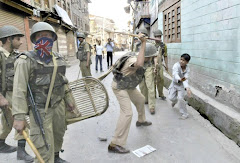


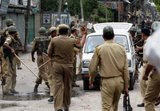



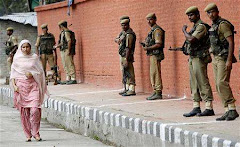














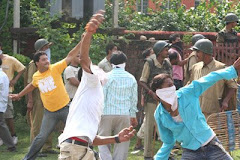

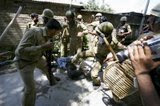




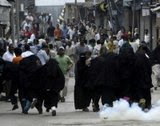







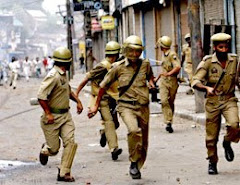
No comments:
Post a Comment